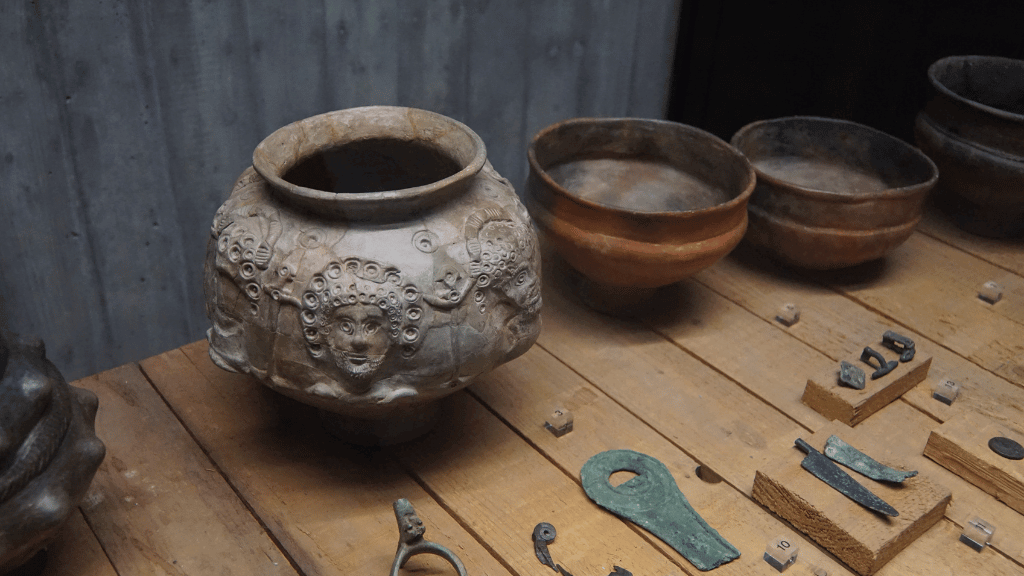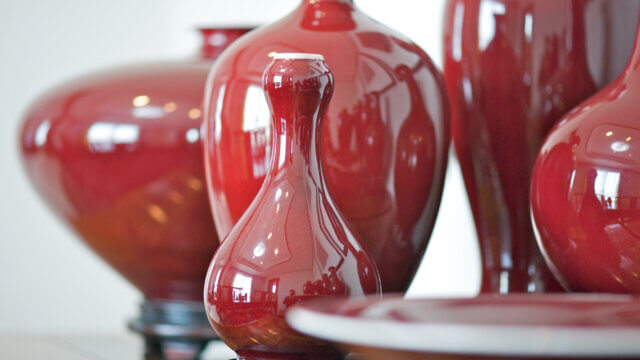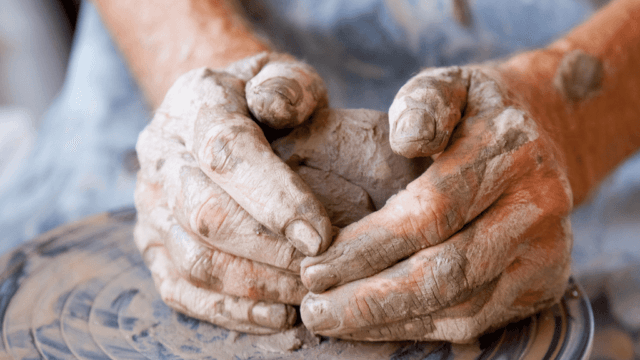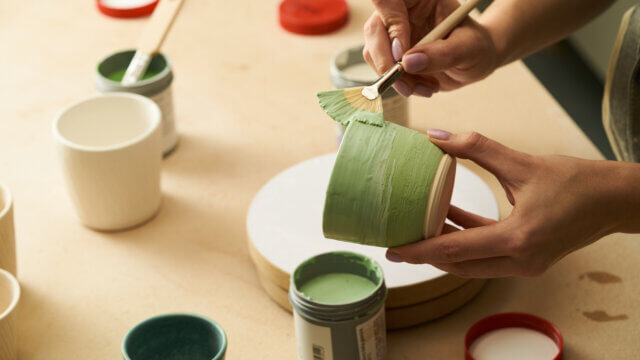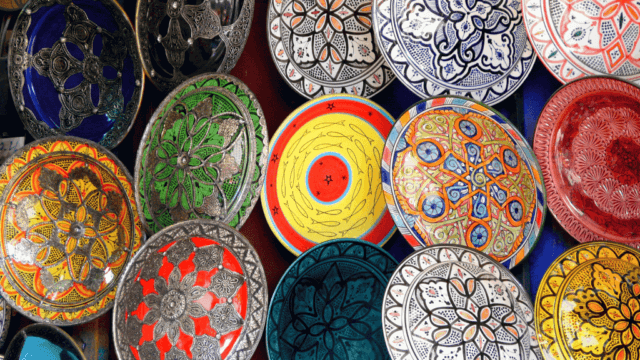Lusterware pottery is a type of ceramic featuring a metallic, iridescent finish achieved through the application of special luster glazes and specific, controlled firing techniques.
This process creates a surface that reflects light, giving the pottery a unique appearance characterized by shimmering colors.
Defining Lusterware Pottery
Lusterware pottery is a distinctive form of ceramic that features a metallic, iridescent sheen obtained through the application of special luster glazes and controlled firing techniques.
The process produces a reflective surface that imparts a captivating, shimmering effect to the pottery, making it highly sought-after by collectors and enthusiasts.
History of Lusterware
The origins of lusterware can be traced back to the 9th century in the Middle East, specifically in present-day Iraq and Egypt.
The luster technique then spread to Spain and Italy during the late Middle Ages and Renaissance periods, eventually reaching England and other parts of Europe in the 18th century.
Lusterware experienced a resurgence in popularity during the 19th and 20th centuries as manufacturing techniques improved and a broader range of colors and designs became available.
Creating Lusterware: Glazes and Firing Techniques
Luster Glazes
The key to achieving the characteristic lustrous sheen lies in the application of specialty glazes.
These luster glazes consist of metal salts and oxides (usually silver, gold, or copper) along with other elements like clay and glass.
The metal compounds in the glaze produce a thin layer of metallic particles on the surface of the pottery during firing, thereby creating the iridescent effect.
Firing Techniques
The firing process is crucial for achieving the metallic luster on surfaced pottery.
Lusterware typically undergoes multiple firings, starting with the initial bisque firing of the clay body.
Following the bisque firing, the pottery is glazed and then fired again, this time at a lower temperature to allow the luster glaze to adhere to the surface.
Finally, a third firing takes place in a reduction atmosphere, which allows the metallic elements of the glaze to create the desired lustrous sheen.
Types and Styles of Lusterware Pottery
Lusterware pottery encompasses a diverse range of styles, colors, and designs, varying according to geographical region and period.
Some well-known examples of lusterware include:
- Islamic Lusterware: Characterized by intricate geometric patterns and often adorned with calligraphy.
- Hispano-Moresque Lusterware: Featuring bold designs influenced by Moorish and Spanish motifs and a golden-brown to orange hue.
- Italian Maiolica: Known for its gleaming copper and silver luster finishes combined with vibrant, detailed Renaissance-style designs.
- Staffordshire Lusterware: Popular during the Victorian era, this English-produced pottery is characterized by rich cobalt blue and pink luster finishes, often with floral or landscape motifs.
Caring for Lusterware Pottery
Preserving the beauty and longevity of lusterware pottery requires proper care and maintenance.
It is essential to handle these delicate pieces gently and take precautions to avoid exposure to extreme temperature changes, harsh cleaning chemicals, and abrasion.
- When cleaning lusterware, use a soft damp cloth or sponge, and avoid abrasive materials or harsh detergents that can damage the luster finish.
- For stubborn stains or dirt, a dilute solution of mild soap and warm water can be used.
Rinse thoroughly and gently pat dry to avoid leaving water spots on the metallic surface.
- Store lusterware pottery in a dry, temperature-stable environment, and avoid displaying it in direct sunlight, which can cause fading over time.
Collecting and Valuing Lusterware
Lusterware pottery has attracted collectors for centuries, and the market is still thriving today.
The value of lusterware pieces varies widely based on factors such as age, provenance, condition, and rarity.
When assessing the value of a lusterware piece or starting a collection, consider the following tips:
- Research the different types and styles of lusterware pottery, as well as the artists and manufacturers behind them, to gain a deeper understanding of the market and what appeals to you as a collector.
- Examine the luster finish closely for any signs of wear, damage, or restoration, which can significantly impact the value of a piece.
- Seek the advice of reputable dealers, auction houses, or appraisers to help you evaluate the authenticity and value of a specific piece or collection.
- Lastly, trust your instincts and buy what you genuinely appreciate and enjoy.
Modern Lusterware Pottery
Today, modern ceramic artists continue to explore the lusterware technique, creating contemporary pieces that showcase the beauty and versatility of this timeless pottery style.
These works range from functional tableware to decorative sculptures and exhibit an array of innovative shapes, colors, and patterns.
By supporting contemporary lusterware artists, collectors help keep this historic art form alive and thriving in the 21st century.
FAQs on Lusterware Pottery
In the following section, we address some frequently asked questions related to lusterware pottery, offering insights and guidance to enhance your understanding of this unique art form.
What are the main characteristics of lusterware pottery?
Lusterware pottery is known for its metallic, iridescent sheen achieved through the application of luster glazes containing metal compounds and a controlled firing process.
These finishes produce a diverse range of captivating colors, patterns, and design styles based on the type of lusterware and region of origin.
How is the luster effect created on pottery?
The luster effect is primarily created through the glazing and firing process.
Luster glazes, made with metal salts and oxides (such as silver, gold, or copper), are applied to the pottery.
A reduction firing then forms a thin layer of metallic particles on the surface, creating the iridescent, reflective finish characteristic of lusterware.
Can lusterware pottery be used for everyday purposes?
While lusterware pottery is often considered more decorative than functional due to its delicate nature, many pieces can still be used for everyday purposes.
When using lusterware for daily use, exercise caution and handle items gently to avoid damage.
Keep in mind that cleaning methods for lusterware differ from those for conventional ceramic pieces to preserve the luster effect.
What factors influence the value of lusterware pottery?
The value of lusterware pottery is determined by various factors, including age, provenance, rarity, artistic style, and condition.
To assess a piece’s value, examine its luster finish for wear or damage, research its history and origin, and consult with experts such as dealers, auction houses, or appraisers who specialize in ceramics and lusterware.
How can I identify authentic lusterware pottery?
Identifying authentic lusterware pottery requires close examination of the piece, observation of its luster finish, and research of its style and origin.
Familiarize yourself with the types and styles of lusterware through books, online resources, and discussions with experts.
Authentic pieces should display a consistent, high-quality finish and craftsmanship, and may bear markings or signatures that can help trace the piece’s provenance.
